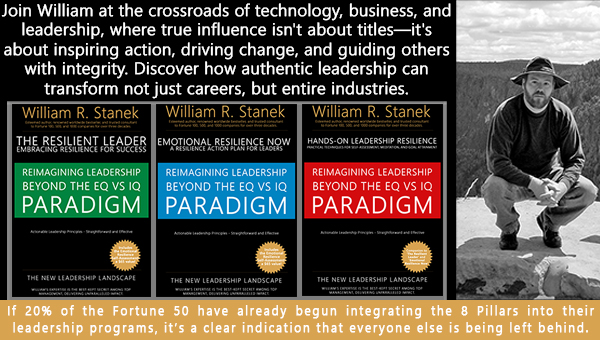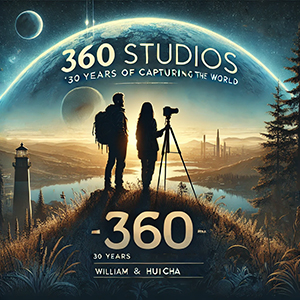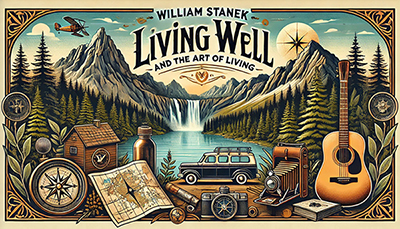
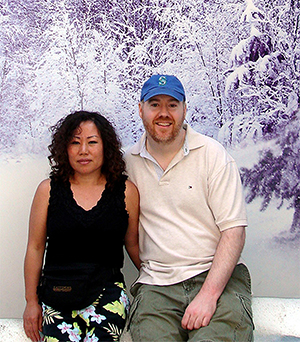 Photography Tips for Everyday Moments
Photography Tips for Everyday Moments
The most extraordinary beauty is often found in ordinary moments. In this series, William Stanek helps you see the world through a new lens, transforming everyday experiences into stunning photographic memories.
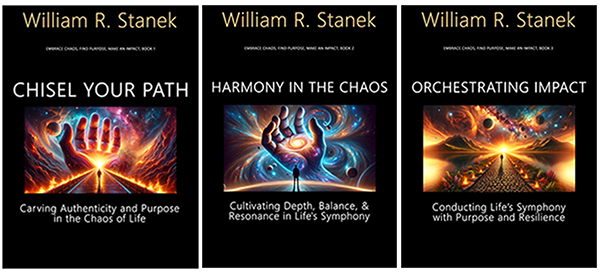
Transform your life with practical wisdom. Discover William Stanek's 'Living Well' series—your guide to a balanced and fulfilling life.
Discover William Stanek's Exclusive Art Collection
Explore and purchase the stunning art featured on this site. Own a piece of William Stanek's unique and captivating artwork today!
(May 9, 2025) Portraits of Objects: Bringing Inanimate Subjects to Life
Photography isn’t just about capturing people or landscapes; it’s also about finding beauty, character, and stories in the everyday objects that surround us. By turning the lens on inanimate subjects, you can explore new creative possibilities and bring these objects to life, imbuing them with personality and narrative. Here, we’ll dive into the art of object photography, focusing on how to use lighting, storytelling, and backgrounds to transform ordinary items into captivating subjects.
Introduction: The Quiet Beauty of Everyday Objects
Objects are often overlooked in photography, dismissed as mundane or uninteresting. But with the right approach, even the simplest items can become fascinating subjects. I’ve always been intrigued by the challenge of making inanimate objects come alive in a photograph—of finding the hidden stories they carry and presenting them in a way that captures the viewer’s attention.
Object photography, like portrait photography, is about more than just documenting what’s there. It’s about revealing the essence of the subject, highlighting its texture, form, and character, and using composition and lighting to create a mood or tell a story. In this article, we’ll explore techniques that will help you bring inanimate objects to life, turning everyday items into works of art.
Lighting for Objects: Highlighting Textures and Forms
Lighting is one of the most critical elements in object photography. The way light interacts with an object can dramatically affect how its textures and forms are perceived, making it appear flat or three-dimensional, dull or vibrant. Understanding how to control and manipulate light is key to creating compelling portraits of objects.
Side Lighting for Texture: Side lighting, where the light source is positioned to the side of the object, is ideal for highlighting textures. This type of lighting creates shadows that emphasize the surface details of the object, making it appear more three-dimensional. Side lighting works particularly well with objects that have interesting textures, such as wood, fabric, or metal.
Backlighting for Silhouettes and Drama: Backlighting, where the light source is behind the object, can create striking silhouettes or add a sense of drama to your image. This technique is effective for creating a strong visual contrast between the object and its background, and it can also highlight the edges and contours of the subject, giving it a glowing outline.
Soft Lighting for Subtlety: Soft lighting, created by diffusing the light source (such as through a softbox, umbrella, or natural light through a window), produces gentle shadows and a more even illumination. This type of lighting is perfect for objects with smooth surfaces or when you want to create a calm, serene mood. Soft lighting is also excellent for reducing harsh reflections on shiny surfaces.
Pro Tip: Experiment with different light sources and modifiers to see how they affect your object. Try using natural light, artificial lights, reflectors, and diffusers to control the intensity, direction, and quality of the light. Small adjustments in lighting can make a significant difference in how the object appears.
Exercise: Choose an object with interesting textures or shapes and photograph it using different lighting setups—side lighting, backlighting, and soft lighting. Pay attention to how the light enhances or diminishes the object’s textures and forms. Reflect on how different lighting setups change the mood and impact of the image.
Storytelling Through Objects: Creating a Narrative with a Series of Object Shots
Every object has a story to tell, whether it’s the history of how it was made, the role it plays in daily life, or the emotions it evokes. By photographing objects with a narrative in mind, you can create images that go beyond mere documentation, capturing the essence and meaning of the subject.
Selecting Objects with Character: Start by choosing objects that have a story or personal significance—items that are worn with age, have a unique design, or are tied to a particular memory or emotion. These objects will naturally lend themselves to storytelling, as their appearance often reflects their history and purpose.
Building a Narrative: Think about the story you want to tell with your object photography. Is it about the passage of time, the craftsmanship of the object, or its role in someone’s life? Consider creating a series of shots that together tell a complete story, such as photographing an object in different contexts, or focusing on various details that reveal its character and history.
Using Multiple Objects: Sometimes, the story of an object is best told through its relationship with other objects. Consider photographing a group of related items—such as tools, kitchen utensils, or personal belongings—that together create a narrative. The way these objects interact in the composition can convey a sense of connection, function, or history.
Pro Tip: Pay attention to the small details that tell the story of the object—scratches, patina, wear and tear. These imperfections are often what give an object its character and make it visually interesting. Highlight these details in your composition to add depth and authenticity to your narrative.
Exercise: Choose an object that has personal significance or an interesting story, and create a photo series that tells its story. Think about how to convey the object’s history, purpose, or emotional significance through your images. Experiment with different compositions, angles, and lighting setups to capture the essence of the object.
Backgrounds and Context: Choosing the Right Setting to Enhance Your Subject
The background you choose for your object photography can greatly influence the final image, providing context, contrast, and a sense of place. A well-chosen background can elevate an object, making it stand out and adding to the story you want to tell.
Simple Backgrounds for Focus: A plain, uncluttered background is often the best choice for object photography, as it allows the object to take center stage without distractions. Neutral colors, such as white, black, or gray, work well for highlighting the form and texture of the object. However, don’t be afraid to experiment with subtle textures or gradients in the background to add depth without overwhelming the subject.
Contextual Backgrounds: Sometimes, the background can be used to add context or narrative to the object. For example, photographing a vintage camera on an old wooden table or a set of kitchen utensils in a rustic kitchen can enhance the story and mood of the image. The background should complement the object, providing additional information about its use, history, or significance.
Contrasting Backgrounds: A background that contrasts with the object in color, texture, or tone can make the subject stand out more vividly. For example, a bright red apple on a dark, textured background creates a striking visual contrast that draws the viewer’s eye to the object. Contrast can also be used to convey mood or emotion, such as pairing a delicate object with a rough, industrial background.
Pro Tip: Consider the scale of the background in relation to the object. A background that is too busy or overwhelming can distract from the subject, while a background that is too plain may make the image feel flat. The key is to find a balance that enhances the object without overpowering it.
Exercise: Experiment with different backgrounds for your object photography. Start with a simple, neutral background, then try adding context or contrast by changing the setting or introducing additional elements. Pay attention to how the background influences the mood and focus of the image, and adjust as needed to enhance the overall composition.
Bringing Objects to Life: Creating Personality and Character
Object photography is about more than just capturing the appearance of an item—it’s about bringing it to life, imbuing it with personality, character, and emotion. By carefully considering lighting, storytelling, and backgrounds, you can transform everyday objects into compelling subjects that resonate with viewers.
Finding the Soul of the Object: Every object has its own “soul,” a combination of its form, function, history, and the emotions it evokes. As a photographer, your job is to discover and highlight this soul, bringing out the unique qualities that make the object special. Whether it’s the sleek design of a modern gadget or the worn surface of an antique tool, look for the details that tell the story of the object’s life.
Experimenting with Angles and Perspectives: Don’t be afraid to experiment with different angles and perspectives to find the most interesting way to present your object. Shoot from above, below, or from the side to see how the object’s shape and texture change with the perspective. Sometimes, an unexpected angle can reveal a new aspect of the object’s character, making it more dynamic and engaging.
Playing with Scale: Consider playing with the scale of your object in relation to its background or other elements in the composition. By photographing an object from a close-up perspective, you can make it appear larger and more significant, or by placing it alongside other objects, you can explore its relationship to them. Scale can add drama, humor, or context to your image, making it more visually and emotionally impactful.
Pro Tip: Take your time to explore the object before you start shooting. Study its form, texture, and details, and think about what makes it unique. The more you understand the object, the better you’ll be able to bring it to life in your photography.
Exercise: Choose an object and spend time exploring different ways to bring out its personality and character through photography. Experiment with angles, perspectives, lighting, and backgrounds to find the composition that best captures the essence of the object. Reflect on how your choices influence the final image and how they contribute to the narrative you’re trying to convey.
Conclusion: The Art of Object Portraiture
Portraiture isn’t just for people—it’s for objects, too. By approaching inanimate subjects with the same care, creativity, and attention to detail that you would give to a human portrait, you can create images that are rich in personality, narrative, and emotion. Object photography offers a unique opportunity to find beauty and meaning in the everyday items that surround us, turning the ordinary into the extraordinary.
As you continue to explore object photography, remember that every object has a story to tell. Whether it’s an heirloom with generations of history, a tool that’s seen years of use, or a simple item that brings comfort and joy, your photography can bring these stories to life. So take the time to look closely, to experiment with light and composition, and to let your creativity guide you in bringing inanimate subjects to life.
Share your object portraits with us on Instagram using #ObjectPortraits. We’re excited to see how you’re turning everyday items into captivating, character-filled subjects.
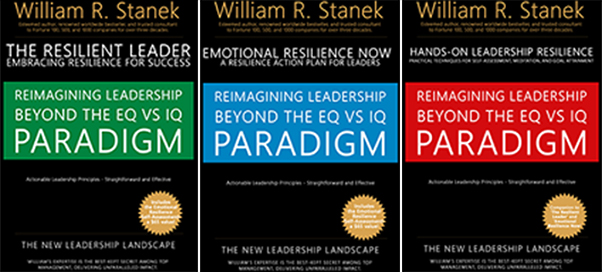
Join William at the crossroads of technology, business, and leadership, where true influence isn't about titles - it's about inspiring action, driving change, and guiding others with integrity. Discover how authentic leadership can transform not just careers, but entire industries.
Bring Inspiration Home
Enhance your space with William Stanek's evocative art. Each piece is crafted to inspire and uplift your everyday life.
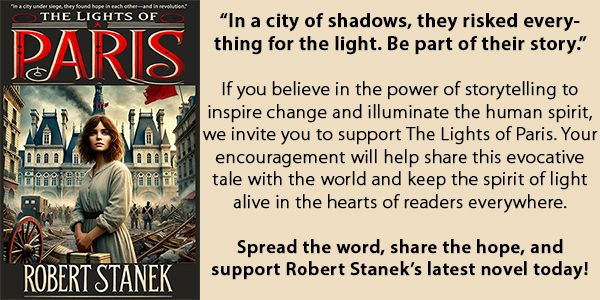
Support The Lights of Paris by Robert Stanek, William Stanek's pen name! Through vivid historical detail and deeply moving character stories, Robert takes readers on an unforgettable journey through one of history’s most transformative times.
